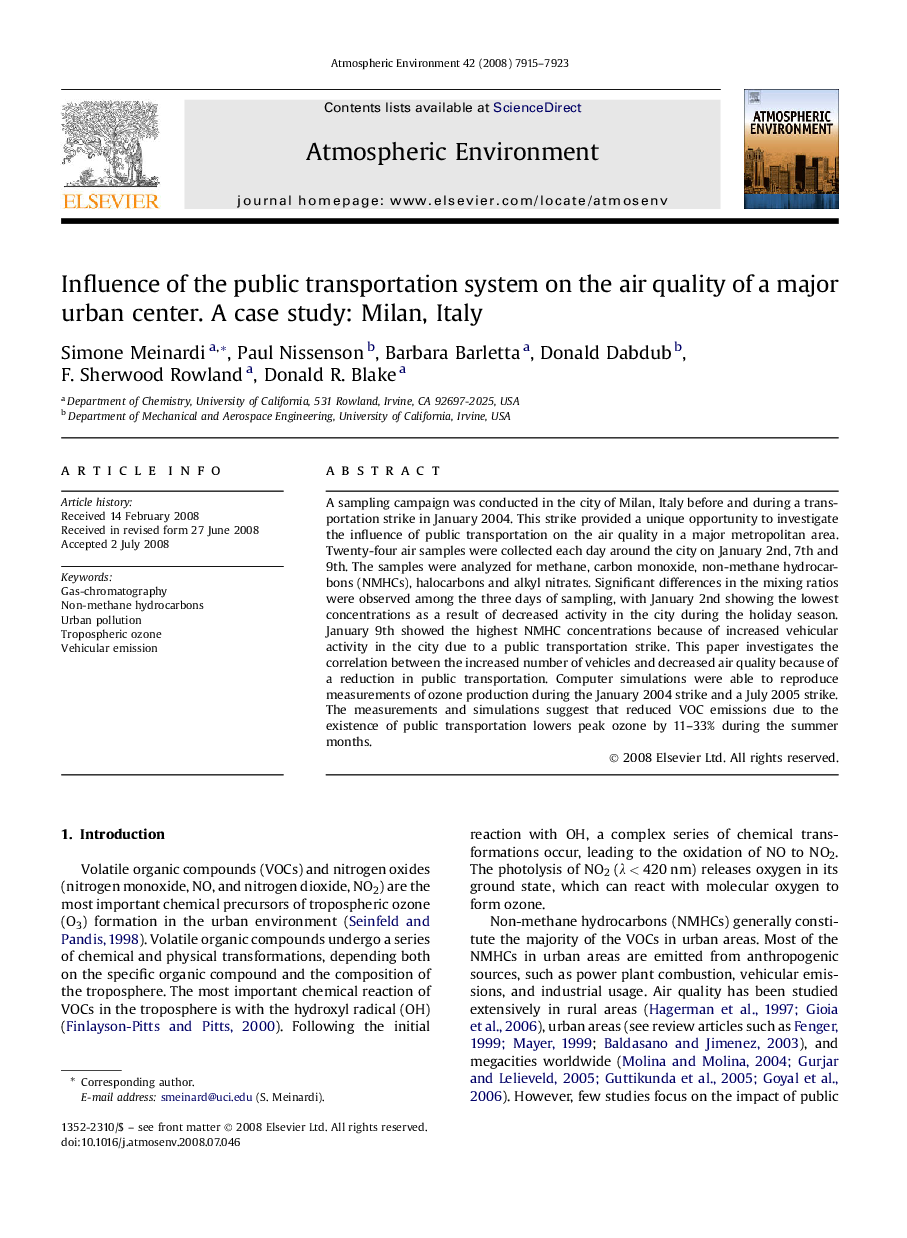| Article ID | Journal | Published Year | Pages | File Type |
|---|---|---|---|---|
| 4441499 | Atmospheric Environment | 2008 | 9 Pages |
A sampling campaign was conducted in the city of Milan, Italy before and during a transportation strike in January 2004. This strike provided a unique opportunity to investigate the influence of public transportation on the air quality in a major metropolitan area. Twenty-four air samples were collected each day around the city on January 2nd, 7th and 9th. The samples were analyzed for methane, carbon monoxide, non-methane hydrocarbons (NMHCs), halocarbons and alkyl nitrates. Significant differences in the mixing ratios were observed among the three days of sampling, with January 2nd showing the lowest concentrations as a result of decreased activity in the city during the holiday season. January 9th showed the highest NMHC concentrations because of increased vehicular activity in the city due to a public transportation strike. This paper investigates the correlation between the increased number of vehicles and decreased air quality because of a reduction in public transportation. Computer simulations were able to reproduce measurements of ozone production during the January 2004 strike and a July 2005 strike. The measurements and simulations suggest that reduced VOC emissions due to the existence of public transportation lowers peak ozone by 11–33% during the summer months.
